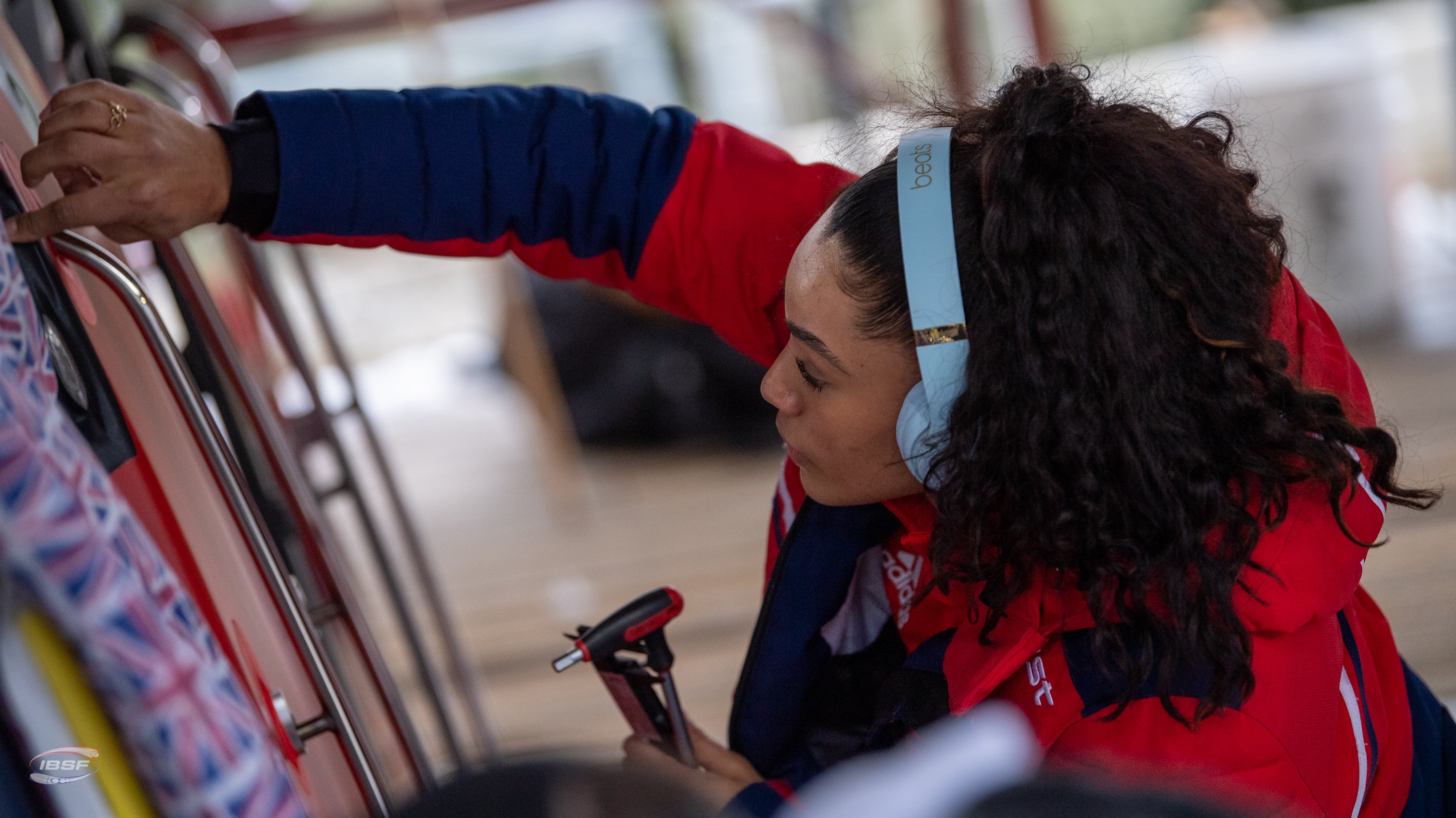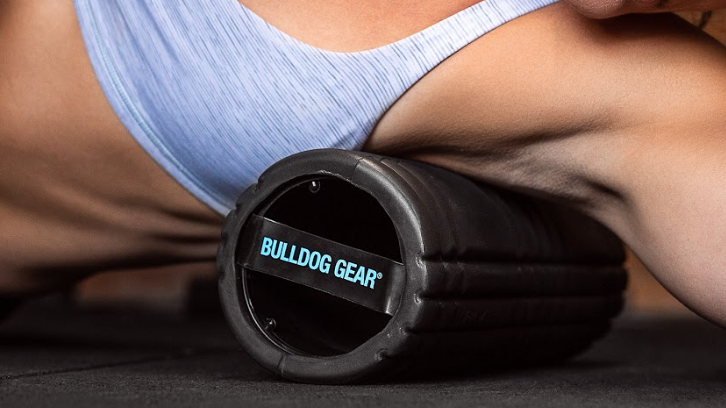
The Ring Muscle Up is my favourite movement to teach. Watching someone progress from pull-ups and dips to a full strict muscle up is an epic and impressive journey that requires a lot of commitment, but most importantly, patience. One key component to reaching this goal is making sure the basics are strong - so be prepared to leave your ego at the door.

Wrist routine
Warming up the wrists is a vital when preparing for ring muscle ups or other variants. We put the wrists into a deep flexion to maintain our false grip during the movement, meaning we need to prep and open them up properly. Follow this short wrist sequence prior to your session, take 2-4 minutes practising this routine.
Banded Wrist Opener
Attaching a resistance band to the rig and working through flexion and extension will help with your wrist mobility.
False Grip
The false grip itself allows us to pull and push, but most importantly, this particular type of grip allows us to turn through the rings into the dip. If your grip isn’t correct then you won't be getting into a strict ring muscle up any time soon, even if you have the strength it requires - a neutral grip will not work! To get into a false grip, the rings need to sit in a diagonal line across your hand. You need to feel the ring on the ‘spongy’ bit of your palm.

Mobility Ball False Grip Hangs
Mobility ball hangs are pretty tough and uncomfortable to begin with, so try to build up the hang time gradually. You can do both wrists together, or one at a time. This kind of hanging will consequently make your false grip feel light and a lot more comfortable in comparison, while also ensuring you don't slip out of the grip. Hold a mobility ball in each hand and hang from the rings using your wrists.


Forearm Mobility
If you’ve been warming your wrists up effectively prior to your session but still feel tight, try mobilising the forearms using a plyometric box and mobility ball. Working through the surrounding tissues where the tightness is can sometimes be a real game changer in terms of available movement.

To perform a strict muscle up you need the skills and strength to be able to pull high, and dip low. Once these are mastered, then the only thing left to learn is movement patterning within the muscle up.
- To work towards a high pull-up, refer back Progressions & Regressions: Pull-Ups.
- For Ring Dips, read Progressions & Regressions: Ring Dips
During a muscle up we pull our body weight up to the rings, taking our thumbs close to our chest. As we turn through the rings we find ourselves in the bottom of a deep ring dip. Consequently, building solid strength and some volume in these two movements are essential in building towards your first muscle up.
To work towards the strength required to perform a muscle up, incorporate the following into your pull-up and ring dip training.
False Grip Ring Rows
Make sure you hands are in the correct false grip position, from here simply perform a regular ring row. Make it more challenging by bringing your feet forward to become increasingly horizontal.


Low Ring Transitions
Starting in the same position as a false grip ring row, pull yourself towards the rings, make sure your thumbs reach your chest. From here turn through the rings into a low dip position. This is your ‘transition’.
Watch full video demonstration here.


Strict Bar or Ring Pull-Ups
Work on your pulling strength by practising strict pull-ups on either a bar or gym rings. Try incorporating the false grip into your ring pull-ups to increase strength in this position. If your pull-ups aren’t quite there yet, introduce a resistance band or perform negatives to build up strength. However, if you're confident with your pulling power, try adding weight to increase existing strength and volume. Be sure to add over the bar/gym ring holds for additional static durability.


Strict Dips
You can practice strict dips on either a dip attachment for a rig or on regular gym rings. Much like working on your pulling power, if you are yet to master the strict dip, work on them by introducing resistance bands and negatives. To perform a banded ring dip, loop one end of the band around a low gym ring, take the other end and hold it onto the opposite ring. Step onto one of the two straps that now sits across you. From here perform a ring dip (be careful stepping out of the band once you’re finished!) Add weight to challenge normal ring dips by wearing a weight vest or a dip belt. To strengthen the deep dip that’s needed for a muscle up, incorporate deep dip static holds, in addition to ring support holds at the top of the dip.



We need to learn the movement pattern to really understand what we’re asking our body to do in the muscle up, this is where resistance bands come in. You can do these even if you don’t have pull-ups and dips, just be sure to choose the right resistance band to suit your abilities. The thicker the band the easier the muscle up, however, be aware that once you are through the rings into the bottom of the dip, the band will no longer be supporting you, evidently turning the movement into a strict dip. If you’re don’t quite have a strict dip, skip that part of the movement for now and work your dip strength separately.
The bands hugely increase volume in our muscle ups - even if you already have a few in the bag. Think of using resistance bands in the same terms as working at a lower percentage of our 1RM, like we would when weightlifting. If you’re able to do one strict muscle up, increase volume by hitting consistent sets of 2-3 on a red band.
Choose a thick band, like a green or purple to begin with and work your way down to the black and then red bands as your strength increases.
- Loop the band through one of the rings
- Place the band across the rings behind you, hold onto the other end of the band and jump your bum in to it.
- Set your false grip - this is important!
- Lower yourself down in the false grip, extending your arms.
- Pull-up, reaching your thumbs to your chest
- Pull your head through the rings into a dip position
- Dip out (if you can strict dip)
- Lower back down to the bottom of the dip
- Take the ring back to the chest - keep control during this transition
- Lower back to the floor.
Watch full video demonstration here.




The negative muscle up starts with our body at the top of the rings in a ring support hold. We’re generally stronger in the negative phase of a movement, but in turn, this will help build strength for the positive due to the muscles lengthening, while we load them.
From the top of the rings we want to lower ourselves slowly down through the full range of motion with solid control. This movement will certainly highlight any parts of the muscle up that aren't strong enough, which might be consequently holding you back from achieving a full strict ring muscle up.
Lower down as controlled as you can, the slower you go the tougher it will be but be sure not to drop into the shoulders. If you are not sure if you are able to do this with control yet, then get a friend to spot you on the low rings first. Generally speaking the transition phase is where most people struggle to stay connected to the rings. In the negative, this happens when we transition from the bottom of the dip to the top of the pull. Make sure the rings stay tight to the body at all times. If we are not able to do this transition phase yet, then for now take a step back and work on the low ring transitions along with static holds at the chest. Remember, leave your ego at the door.
To make negative muscle ups harder we can add pauses and isometric holds at intervals on the way down, additionally we can add weight by wearing a weight vest.
Watch full video demonstration here.


Start by achieving your first ring muscle up. Look at hitting consistent singles at bodyweight and then packing out the rest of your session with some volume in variant pulling and pushing movements. Use the bands too to help with more volume. Remember this is like hitting percentage work. Next we can start adding weight to our muscle ups, which will greatly increase our ability to pull faster without weight, increase volume and strength throughout the movement.
The most important thing to remember is to not neglect the basics once you’ve achieved a few ring muscle ups. It’s easy to get excited by the more difficult and advanced movements and end up getting carried away, neglecting the smaller, important aspects that improve your existing skills. Without that smaller elements you wouldn't have got where you are now, so don't leave it behind. If you do, you may find that you won't only struggle to progress any further while maintaining a sound base of strength, but your wrists and elbows may suffer too if they’re not conditioned properly. Focus on keeping the small frame strong; your smaller muscles and connective tissues, as well as your bigger muscle groups.





